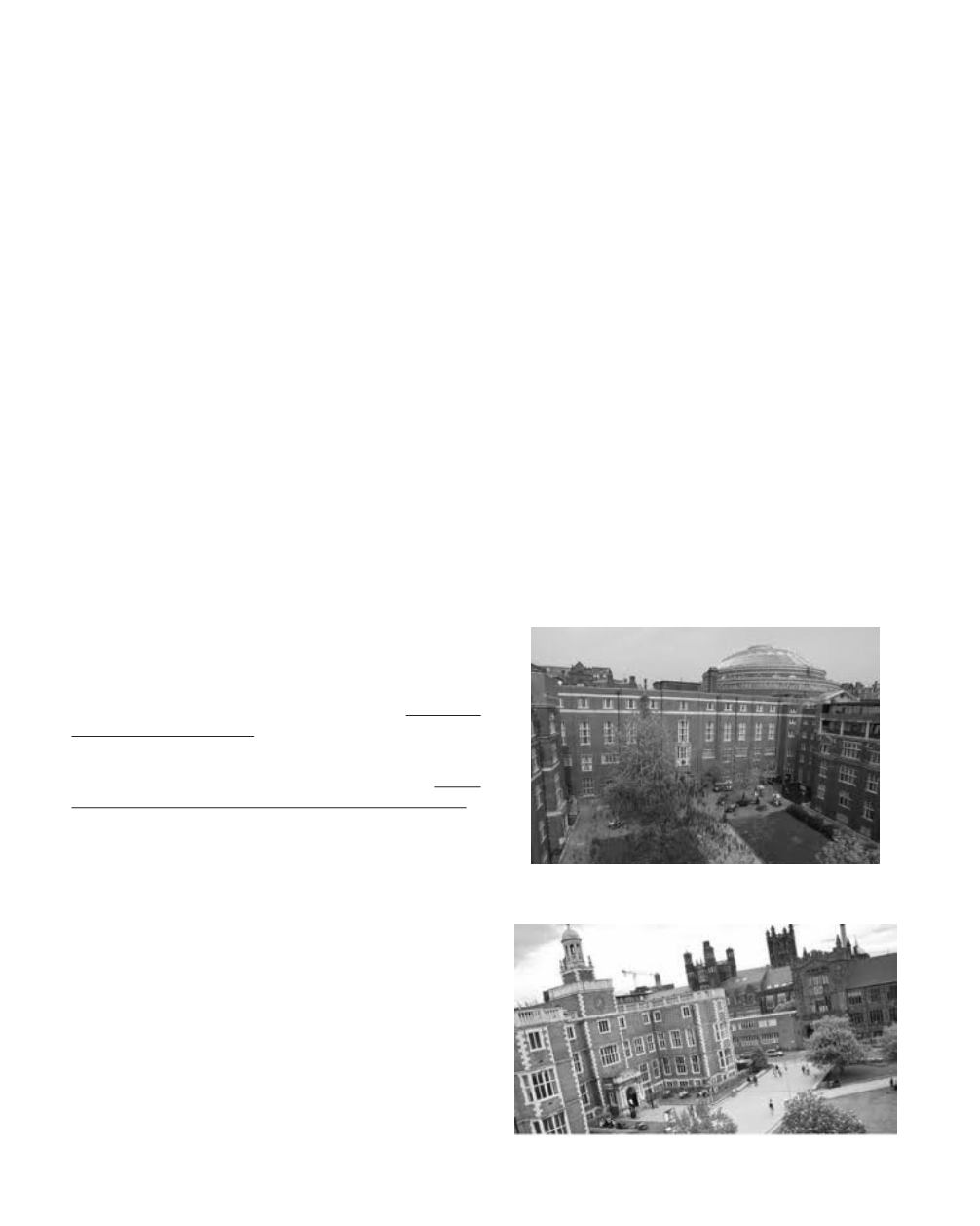
145
Bo r l a s i a n 2 0 1 3
Old Borlasians
Imperial College
Newcastle University
However, Johnson had to replace some pieces, and turned
to theWest Indies for new sidemen. Four new players duly
arrived in 1937, including saxophonist and clarinettist
Carl Barriteau. Together they responded to Ken Johnson’s
desire to recreate an American swing sound.
By 1940 they were regarded as one of the top swing bands
in the country. A year later, The West Indian Orchestra
became the resident band at
The Cafe de Paris
in London’s
West End.
On Saturday 8 March 1941, Ken Johnson and The West
Indian Orchestra were entertaining London’s swing set at
the Cafe De Paris as usual. That night, the area between
Piccadilly Circus and Leicester Square was being strafed
with bombs. One of them found its way down an airshaft
into the club where it exploded. Guitarist
Joey Deniz
recalls that the band would usually start around 9.30pm,
and that night they had just started playing “ Oh Johnny”,
probably ten minutes later, when the glass ceiling of the
club was shattered. The estimated numbers of dead and
injured vary, but most reports agree that over 30 people
died and a further 60 or more were injured by the blast.
Survivors were taken to the Charing Cross Hospital, where
Frank Deniz, who had been playing with his band in a club
nearby, found his brother, injured but alive. Tragically,
Ken Johnson was not one of the survivors. An eyewitness
recalls how he was found lying dead, but unmarked by any
outward signs of injury, a flower still in his lapel. He was 26
years old.
Johnson’s ashes were placed at his old school, Sir William
Borlase’s Grammar School, where they reside in the school
chapel, together with a panel dedicated to him.
There is an excellent website dedicated to him at http://
David Dandridge (1950 – 1958)
(David is a very keen cricketer and played (cricket of course !! )
in DUBAI in February this year.)
The changing face of universities:
1962-2012
As a follow-up to my recent offerings (see ‘The Borlasian’
2009 and 2012), I take a look at some aspects of the
current British university system. In particular, I will make a
few personal observations about how the landscape and
structure have changed over the past 50 years. This could
cover a lot of ground, so I will limit myself to the most
obvious changes that I have noticed during more than 40
years teaching at Newcastle University. Those of a certain
age will probably recognise much that I describe; those of
a younger persuasion might wish to learn a little of how
things were and how they have changed.
When I first started at university (Imperial College), in
1962, after 7 years at Borlase, I entered a system of higher
education that included less than a quarter of the number
of universities currently in the UK. Further, not more than
about 5% of the population went to university – very
different today! With some exceptions, the university
entrant was a student with a strong commitment to
scholarly pursuits; it was taken for granted (back in
the 1960-70s) that suitable employment would follow
automatically, so that gaining a degree
simply
to get a


